2020 International Congress on Medieval Studies Call for Papers
July 9, 2019 in Announcements, Conference, Conference Announcement, International Congress on Medieval Studies, Kalamazoo
Sessions
Sponsored and Co-Sponsored
by the Research Group on Manuscript Evidence
at the 55th International Congress on Medieval Studies
7–10 May 2020
Call for Papers
Deadline for Proposals = 15 September 2019
[Published on 8 July 2019, with updates.]
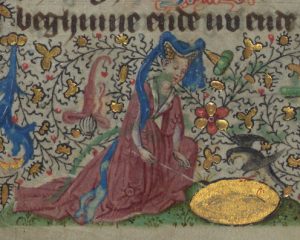
Baltimore, The Walters Art Museum, MS W.782, folio 15r. Van Alphen Hours. Image via Creative Commons.
With the achievement of our Activities at the 2019 International Congress on Medieval Studies (ICMS), as announced in our 2019 Congress Program, we prepare the program for the 2020 Congress. Accepting most of our proposed Sessions, the Congress Committee publishes the full 2020 Call for Papers for the 55th ICMS, with the list of Session Titles and Sponsors. Here we announce our 4 sponsored and co-sponsored Sessions and describe their aims.
In 2019, the Research Group on Manuscript Evidence celebrates its 20th year as a nonprofit educational corporation and its 30th year as an international scholarly organization. We have a tradition of celebrating landmark Anniversaries, both for our organization, with organizations which which we share anniversaries, and for other events, as described, for example, in our 2014 Anniversary Reflections. We build upon this year’s multiple celebrations in designing future activities.
*****
This coming year, 2020, we prepare events at the Congress and elsewhere, as customarily, so as to represent, to explore, to promote, to celebrate, and to advance aspects of our shared range of interests, fields of study, subject matter, and collaboration between younger and established scholars, teachers, and others, in multiple centers.
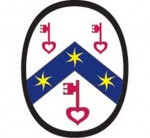 As in recent years, we co-sponsor Sessions with the Societas Magica (2 Sessions). It will be the 15th year of this co-sponsorship.
As in recent years, we co-sponsor Sessions with the Societas Magica (2 Sessions). It will be the 15th year of this co-sponsorship.
Also, like the 2015–2019 Congresses, we plan for
- an Open Business Meeting and
- a Reception.
As usual, we aim to publish the Program for the accepted Papers, once the Call For Papers has completed its specified span. We will publish the Abstracts for these Papers as the preparations for the Congress advance and as their Authors permit. Abstracts for previous Congresses appear in our Congress Abstracts, conveniently Indexed both by Year and by Author.
Background and Foreground
Glimpses of our co-sponsored Receptions at the Congress appear in the souvenirs of our Celebrations and in the Reports for the individual Congresses (2016, 2015, and 2014 Anniversary).
The Agendas for our Open Business Meetings are available for your inspection and perusal:
These 1-page statements serve as concise Reports for our Activities, Plans, and Desiderata.
Interesting, isn’t it, that these Agendas are one of our Most-Downloaded Offerings? Some of them now stand among the Top 5 Most Popular Downloads on our site.
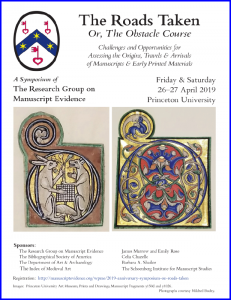 The most popular downloads still remain our copyright and FREE multilingual digital font Bembino, and some Booklets from our Symposia and Colloquia. So far, those “best sellers” — they are FREE — include:
The most popular downloads still remain our copyright and FREE multilingual digital font Bembino, and some Booklets from our Symposia and Colloquia. So far, those “best sellers” — they are FREE — include:
- The Roads Taken (from our 2019 Anniversary Symposium)
- Words & Deeds (from our 2016 Symposium)
- When the Dust Has Settled (from our 2014 Colloquium)
- Predicting the Past (from one of our 2015 Congress Sessions).
These publications, like most of our Publications, are FREE, but we welcome donations, both in funds and in kind, for our nonprofit mission, with the option of tax-deduction for your Donations.
We look forward to your contributions.
*****
And now, here is the plan for 2019 at the International Congress on Medieval Studies. We announce the accepted Sessions, describe their aims and scope, and provide information for sending your questions and your proposals for papers to the Session Organizers. Herewith our Call for Papers for the 2019 Congress.
Sessions for the 2020 Congress
 I. Sponsored by the Research Group on Manuscript Evidence
I. Sponsored by the Research Group on Manuscript Evidence
2 Sessions
1. Prologues in Learned Texts of Medieval Magic
Although the prologues of learned books of magic could take many forms, nearly all share at least one common characteristic: the claim to transmit a secret and pristine branch of knowledge. Such claims are frequently couched in the form of a narrative describing how this secret knowledge was originally revealed. Many employ the same actors (Hermes Trismegistus, King Solomon, Aristotle), the same objects (a tablet or disk made of precious material and inscribed with divine wisdom), and the same locations (a hidden cavern or lost pagan temple). These narratives helped to establish the authority of their texts, broadcast their affiliation with specific discourses, and signal how they should be read. Moreover, the prologues served to highlight the erudition of their authors through the use of classical and biblical references and often sophisticated word-play.
The aim of this session is to explore these still largely understudied prologues which testify to the variety of medieval approaches to ‘magic’. What do these prologues have to tell us about the institutional, cultural, and political milieux in which they were produced? How do certain recurring mythemes found in these prologues stand in relation to the various magical and divinatory arts, specifically those classified as natural or demonic? And to which philosophical, mystical, or religious beliefs do they appeal in order to justify the magical practices that they introduce?
Other potential topics relating to magical prologues include, but are not limited to

Hermes Trismegistus holds an open book. Frontispiece Image (Lyons, 1669) via Wikimedia Commons and Wellcome Images (Wellcome_L0000980).
- the rhetoric of authority and the relation between power and secret knowledge
- the intersection of diverse intellectual traditions
- the continuity and reception of the Classical Tradition
- the appropriation of Jewish and Arabic traditions
- the relation between the tropes and mythemes found in magical prologues and those in other literary genres, such as prophecies and romances
- the assimilation of philosophical and medical texts
- the use of the Bible and biblical traditions
- philological and text-critical studies of magical prologues.
Organized by
Vajra Regan
Centre for Medieval Studies
University of Toronto
125 Queens Park
Toronto, ON M5S 2C7
CANADA
[email protected]
Please send your proposals to [email protected] by 15 September 2019.
2. Seal the Real: Documentary Records, Seals & Authentications
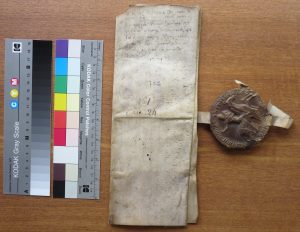
Judgment of Arbitration by Philip I, Count of Savoy, of 28 May 1275
with Brown Wax Seal
and with Docketing in French. Photograph by Mildred Budny.
This session explores the presentation and attestation of documentary records in the medieval and early modern periods, in the long transition to the modern custom of signatures as autographs — as distinct (partly) from earlier ‘signatures’ often made by proxy, whether by cross-signs, names inscribed by others on behalf of the signatory, personal or official seals, or other forms. The fields of consideration include forgeries (‘signatures’, seals, and questionable documents), reported records of documents perhaps otherwise lost (as in cartularies, chronicles, and other narratives), and the occasional preservation of fingerprints upon the records themselves.
The time-honored human determination to establish recognized — that is, effective — modes of authenticating intentions and actions by individuals and institutions alike underpins the historical transmission (or disruption, willful and otherwise) of formal records of agreements, sales, transfers, decisions over grievances and feuds, and other impactful official arrangements across the centuries. Examining case studies for this session, we encourage multiple approaches, subject matters, and methodologies for analyzing the strategies adopted (successfully or otherwise) in the pursuit of such a quest for authentication.
The desire effectively to express identity and authenticity as a matter of record may well resonate with many participants. The Session considers aspects of the historical traditions, improvisations, inventions, and (it may be) occasional failures of earlier centuries in such a quest. Perchance we might learn instructively from the past.
Organized by
Mildred Budny
Research Group on Manuscript Evidence
A New Jersey Nonprofit Educational Corporation
46 Snowden Lane
Princeton
New Jersey 08540
Please send your proposals to [email protected] by 15 September 2019.
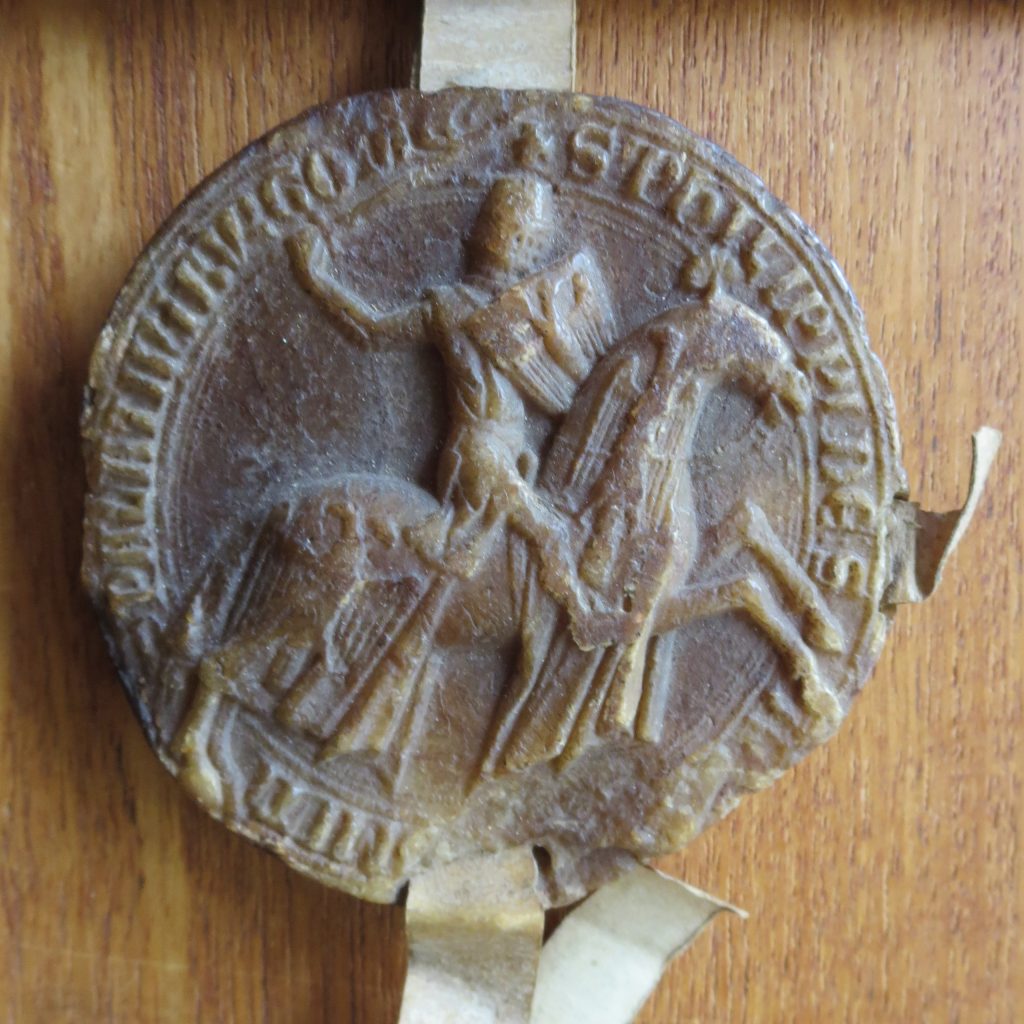
Equestrian Wax Seal of Philip I, Count of Savoy,
Affixed to his Judgment of Abritration, 28 May 1275. Photograph by Mildred Budny.
II. Co-Sponsored with the Societas Magica
 2 Sessions, in Parts I & II: Revealing the Unknown
2 Sessions, in Parts I & II: Revealing the Unknown
3. Revealing the Unknown I:
Scryers and Scrying in the Middle Ages and Early Modern Period
From the little boy on the lap of the priest to the astrologer physician Richard Napier, scryers have fulfilled a significant role in spirit communications throughout the Middle Ages and early modern period. That children were instrumentalized by clergy doubling as ritual magicians has been known for a long time. The activities of professional adult scryers, such as Edward Kelley and Sarah Skelhorn, are likewise well-documented. Recently, however, attention has moved to the scrying activities of medical and astrological professionals, as Ofer Hadass’s study of Richard Napier bears out. The autobiography of William Lilly and the manuscripts of Elias Ashmole suggest that early modern astrologer physicians utilized scrying in different ways from the medieval clerical underworld.
This session offers an opportunity to reassess older notions about scryers and scrying, and to engage with current research on the identity and activities of professional scryers. Topics for papers could feature, for instance, the techniques used by scryers, the necessary instruments for this craft, as well as the goals for which a scryer’s services could be used. Diachronic approaches to the topic are welcome, and papers that consider cross-cultural approaches, such as Jewish or Arabic scryers and scrying practices, are encouraged.
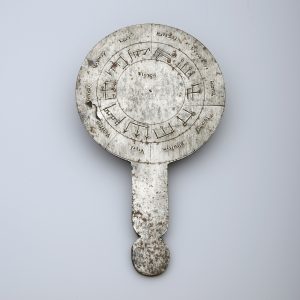
Magic mirror of Floron. Mathematisch-Physikalischer Salon, Staatliche Kunstsammlungen Dresden. Via Creative Commons.
Organized by
Sanne de Laat
English Department
Radboud University Nijmegen
[email protected]
László Sándor Chardonnens
English Department
Radboud University Nijmegen
PO Box 9103
6500 HD Nijmegen
The Netherlands
[email protected]
Please send an abstract (200 words maximum) to both session organisers before 15 September 2019.
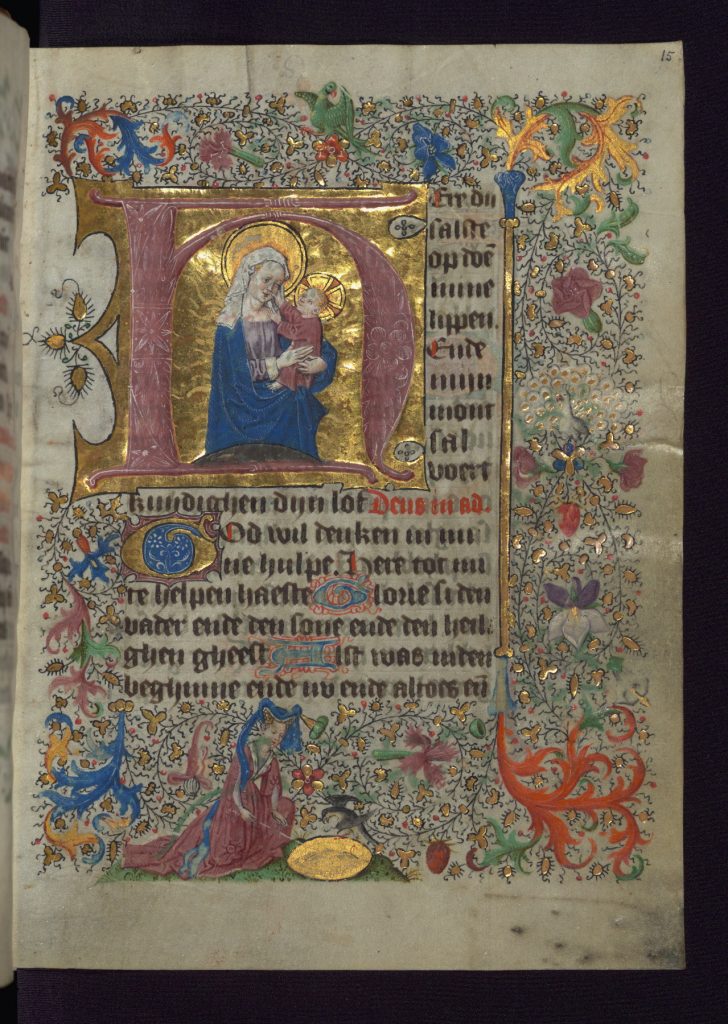
Baltimore, Walters MS W.782, folio 15r. Van Alphen Hours. Dutch Book of Hours made for a female patron in the mid 15th century. Opening page of the Hours of the Virgin: “Here du salste opdoen mine lippen”. At the bottom of the page, an elegantly dressed female figure gazes into a bowl- or mirror-like object, perhaps to perform skrying or to lure a unicorn. Image via Creative Commons.
4. Revealing the Unknown II:
Sortilège, Bibliomancy, and Divination
From earliest times, humans have sought methods to contact supernatural entities to obtain knowledge of the present or future, known as divination. In ancient and medieval contexts, two such methods that were sometimes connected were sortilege and bibliomancy: for example, the Lots of Mary, the Sortes Astramphysychi, Homeric Oracles, Virgilian Oracles.
These practices involved numerological processes to select specific passages from canonical texts in order to divine on desired topics. This session will focus on these and other methods of divination, so as to understand how textual and other authorities became invested with powers far greater than the impacts of their literary merits.
Organized by
Phillip A. Bernhardt-House
101 SE Ely Street, #D-102
Oak Harbor, Washington 98277
[email protected]
Please send your proposals to [email protected] by 15 September 2019.
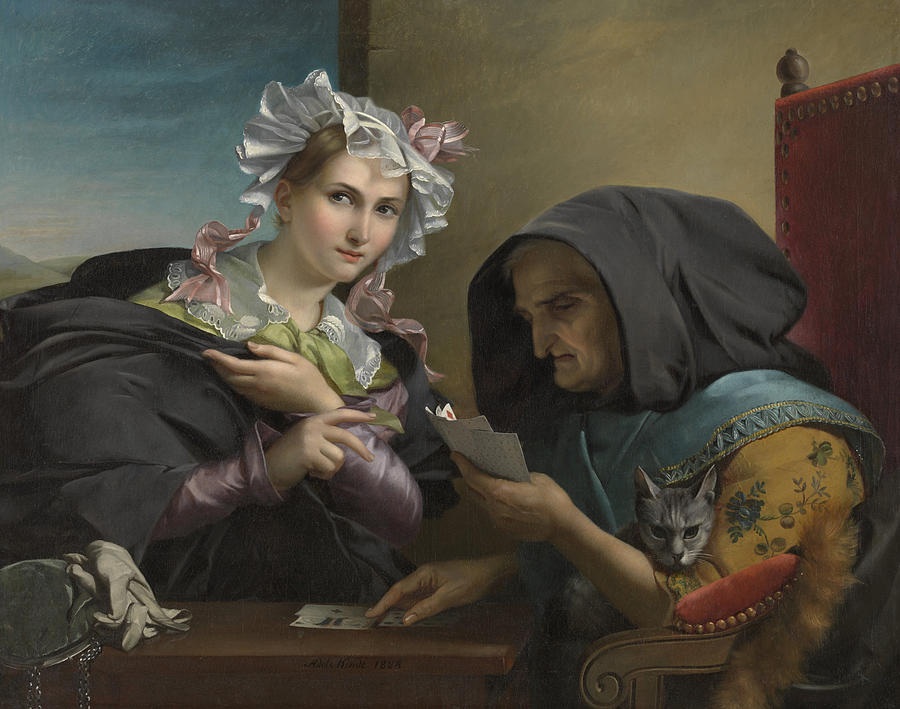
Adèle Kindt (1804–1884), The Fortune Teller (circa 1835), cat included. Antwerp, Koninklijk Museum voor Schone Kunsten. Image via Wikimedia Commons.
*****
Please send your proposals for papers, along with the completed Congress Participant Information Form, to the Session Organizer(s) or to [email protected] to reach us on or before 15 September 2019.
Please Contact Us with your questions and suggestions.
For our nonprofit educational mission, with tax-exempt status, donations in funds and in kind (expertise, materials, time) are welcome.
*****
For updates, please visit this site, our News & Views, and our Facebook Page .

*****
[Now see our 2020 International Congress on Medieval Studies Program Announced.
*****

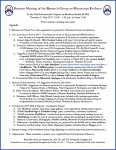
Sounds awesome! Great for medieval era lovers.
Thank you!